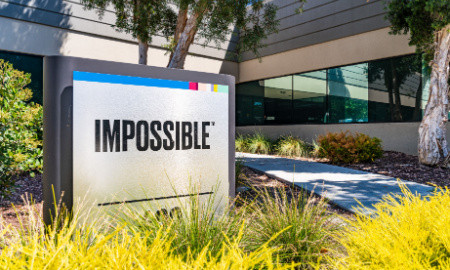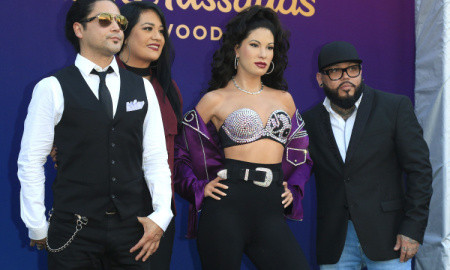Sign up for our free daily newsletter
YOUR PRIVACY - PLEASE READ CAREFULLY DATA PROTECTION STATEMENT
Below we explain how we will communicate with you. We set out how we use your data in our Privacy Policy.
Global City Media, and its associated brands will use the lawful basis of legitimate interests to use
the
contact details you have supplied to contact you regarding our publications, events, training,
reader
research, and other relevant information. We will always give you the option to opt out of our
marketing.
By clicking submit, you confirm that you understand and accept the Terms & Conditions and Privacy Policy
Golf fans will be looking forward to the Ryder Cup which begins in Rome at the end of September. Until then, they could choose to whet their appetite by looking at a recent UK trademark registry dispute around the ownership of trademarks for the name SAMUEL RYDER between the entities behind the Ryder Cup golf competition and members of the Ryder family which, amongst other things, gives a history lesson about the competition and its founder.


These applications were opposed by Ryder Cup Limited and Ryder Cup Europe LLP (jointly Ryder Cup) who own registrations for RYDER CUP and SAMUEL RYDER. Ryder Cup claimed there would be a likelihood of confusion, an unfair advantage taken of their earlier rights and Passing Off. They also claimed that the applications were filed in bad faith (as in full knowledge of their rights and to use as leverage in commercial negotiations). The applicant denied these claims, put the prior rights for RYDER CUP to proof of use and counterclaimed that Ryder Cup’s SAMUEL RYDER prior registration had itself been filed in bad faith (after they had started negotiations about using the name, and to block their entry to the market and having no intention to use the mark for the goods/services applied for).
Given the nature of the claims, a significant amount of evidence was filed. To golf fans, perhaps the most interesting evidence was that about the history of the name. A neat summary taken from the case on this history and brand ownership is as follows:
“Samuel Ryder Ltd… is a company established by some of the descendants of businessman and philanthropist Mr Samuel Ryder. In 1927, Mr Ryder donated a trophy to be awarded to the winners of a biennial competition between teams of professional male golfers, one from Great Britain and the other from the US, on the condition that the trophy be named ‘The Ryder Cup’.
“Further tournaments took place in 1929, 1931, 1933, 1935 and 1937. The next tournament was held in 1947, following the end of the Second World War. The competition is now between teams from Europe and the US and the venue alternates between them. From the 1950s until 2018, members of the Ryder family were invited to attend Ryder Cup matches as official guests.
"The other parties to the proceedings are responsible for the organisation of the Ryder Cup golf tournament when it takes place in Europe. The Professional Golfers’ Association of America is responsible for the event when it takes place in the US. The global intellectual property rights associated with the tournament are split between the US and the European organisations on a territorial basis.
“The corporate structure of the European operations merits some explanation at the outset. Until 1974, the Professional Golfers’ Association (PGA) was responsible for running the tournament. In that year, the PGA European Tour split off from the PGA and the two organisations ran the tournament through a company called Ryder Cup Limited. Following a restructuring in 2004, Ryder Cup Limited became a wholly owned subsidiary of Ryder Cup Europe LLP, in which the PGA and PGA European Tour are majority shareholders. Ryder Cup Limited owns one of the marks that are relied upon in the oppositions, while Ryder Cup Europe LLP owns the others.”
Samuel Ryder Ltd was in essence acting on behalf of the Ryder-Smith brothers who are great-grandsons of Samuel Ryder.
The outcome of the case was that the opposition was successful and all three applications were rejected in full.
Neither bad faith claim was upheld. The ground in opposition did not present a strong enough presumption of bad faith against the brothers who the hearing officer held believed they had rights to the name. The cancellation failed as the actions of the Ryder Cup parties were held to be as consistent with good faith (protecting their commercial interest/future commercial developments) as bad faith.
That left the prior SAMUEL RYDER registration (which was not subject to proof of use) as valid. It was therefore held that all three applied for marks, as essentially consisting of the same name, were identical or similar. Given the goods/services applied for were either identical or similar to those covered by the earlier rights, the applications were reused either under the identical mark/identical goods provision or because of a likelihood of confusion.
For completeness, the hearing officer also assessed the grounds based on the RYDER CUP prior right. Proof of use and repute was submitted and, whilst it was held the RYDER CUP and SAMUEL RYDER marks were not similar enough for there to be confusion, they were similar enough to bring to mind and take unfair advantage of the repute of the RYDER CUP mark for a subset of the applied of goods/services where there was a link in the public’s mind.
So lots of interest there to a trademark practitioner, but we hope to a golf fan too. Here at Stobbs, we have quite a few of us who are both.
At the time of writing, this decision is still open to appeal.
Stobbs’ Intangible Asset Director Geoff Weller is experienced in filing and prosecuting trademark applications in the UK, Europe and internationally, as well as in clearance searching, handling contentious matters and conducting general trade mark portfolio management and development for a wide range of clients. He can be reached at [email protected].
Also an intangible asset director, Joel McDonald joined Stobbs in November 2018 as a trademark attorney and has since gone on to lead the firm’s growing sports practice. He and his team work with a wide range of the firm’s sports and entertainment clients, providing strategic advice on overall brand strategy. He can be reached at [email protected].
Email your news and story ideas to: [email protected]












